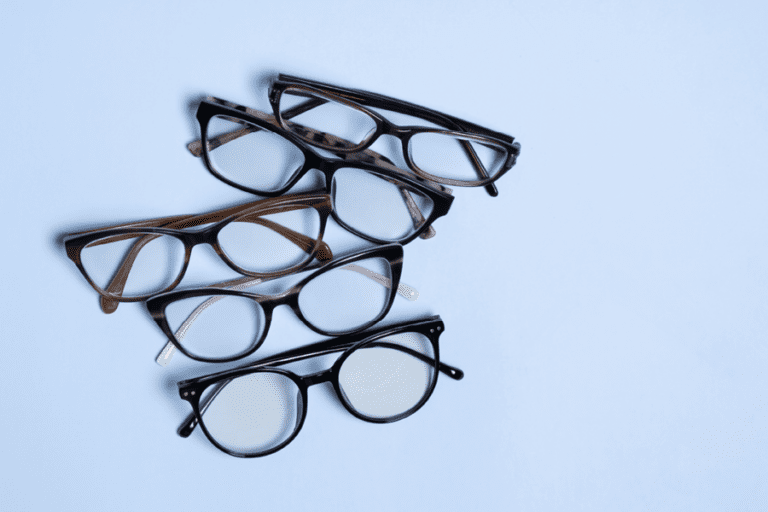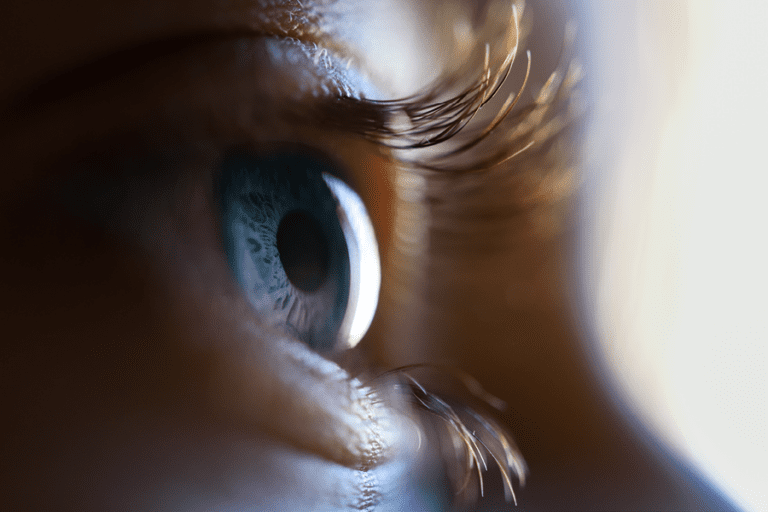Have you found yourself squinting to read a menu or zooming in on your phone’s text more often? Maybe you missed a turn because the road sign seemed more difficult to read than usual. These common frustrations could be early signs of age-related changes in your vision, particularly those linked to age-related macular degeneration (AMD).
What is age-related macular degeneration?
Age-related macular degeneration is the leading cause of vision loss in adults over the age of 50. This condition occurs when a part of the retina called the macula begins to break down. The macula helps filter light, making it essential for maintaining central vision. When damaged, seeing small details both near and far becomes increasingly difficult.
Dry vs. wet age-related macular degeneration
There are two types of age-related macular degeneration: dry (atrophic AMD) and wet (advanced neovascular AMD).
- Dry age-related macular degeneration is the more common of the two, with about 80% of adults experiencing this type, and is, fortunately, less serious.
- According to The American Academy of Ophthalmology, “Dry AMD is when parts of the macula get thinner with age, and tiny clumps of protein called drusen grow.” As a result, central vision gradually deteriorates over time.
- Wet age-related macular degeneration is a much more serious condition that occurs when “abnormal blood vessels grow under the retina.” As these vessels grow, they are more likely to leak blood or other fluids into the eye. This can scar the macula, leading to more rapid vision loss.
Symptoms of age-related macular degeneration
Early-stage ARMD may not present noticeable symptoms at first, but as it progresses, common signs may appear, including:
- Blurred or distorted central vision
- Difficulty recognizing faces
- Dark or empty spots in your field of vision
What causes age-related macular degeneration?
The exact cause of AMD remains unknown. While it is more common in adults over 50, factors such as family history, genetics, race, smoking, obesity, and cardiovascular disease may also play a role.
Some studies suggest that you may lower your risk by maintaining a healthy lifestyle, including avoiding smoking, exercising regularly, and following a nutrient-dense diet.
What can I do if I have age-related macular degeneration?
Prevention of age-related macular degeneration starts with routine visits to your eye doctor. If signs of intermediate AMD are detected, certain dietary supplements containing vitamins and minerals like vitamin C, vitamin E, copper, and zinc may help slow its progression.*
*Always be sure to consult your doctor before starting any new supplements or vitamins.
For late-stage age-related macular degeneration, treatment options include anti-VEGF injectable drugs or photodynamic therapy, which combines injections with laser treatment. Your eye doctor will determine the best course of action for your specific needs.
Take charge of your eye health
Protecting your vision starts with prioritizing eye health and scheduling regular eye care appointments. Early detection through routine eye exams can make all the difference in managing conditions like AMD. Schedule your annual eye exam today!



